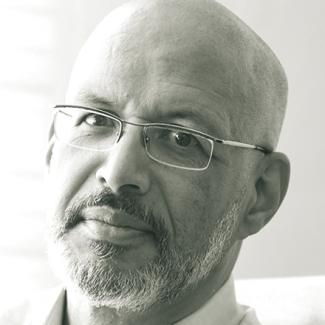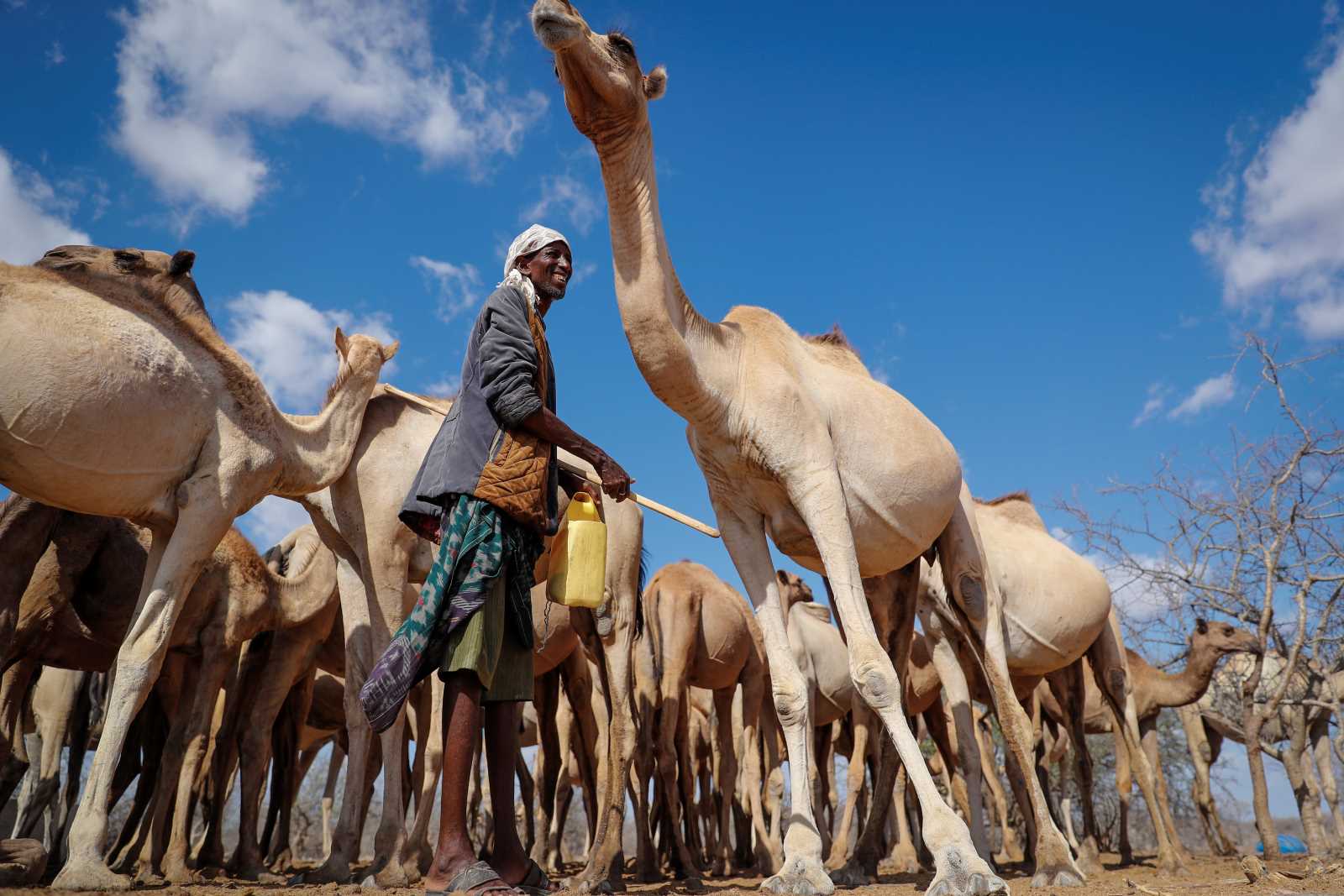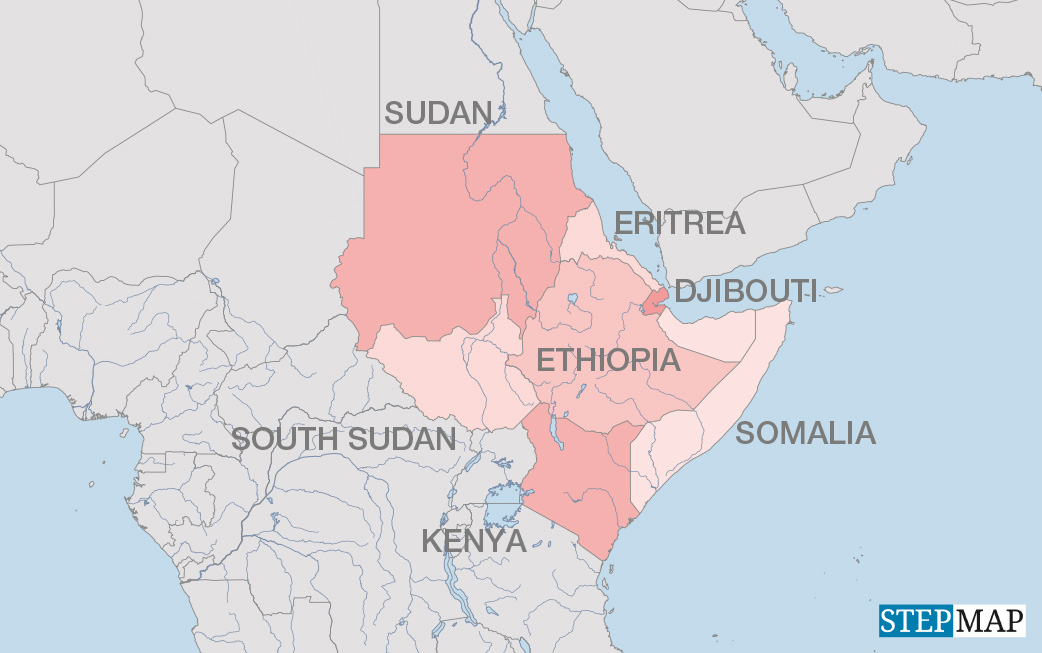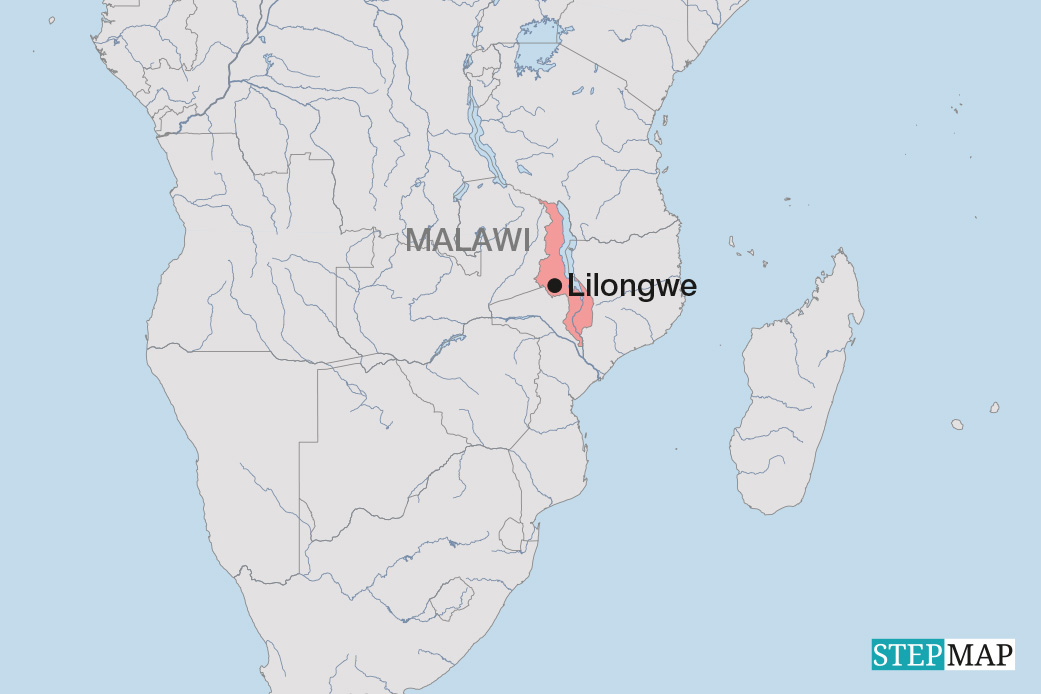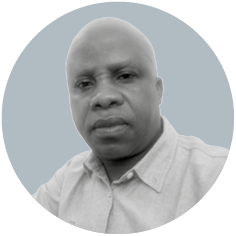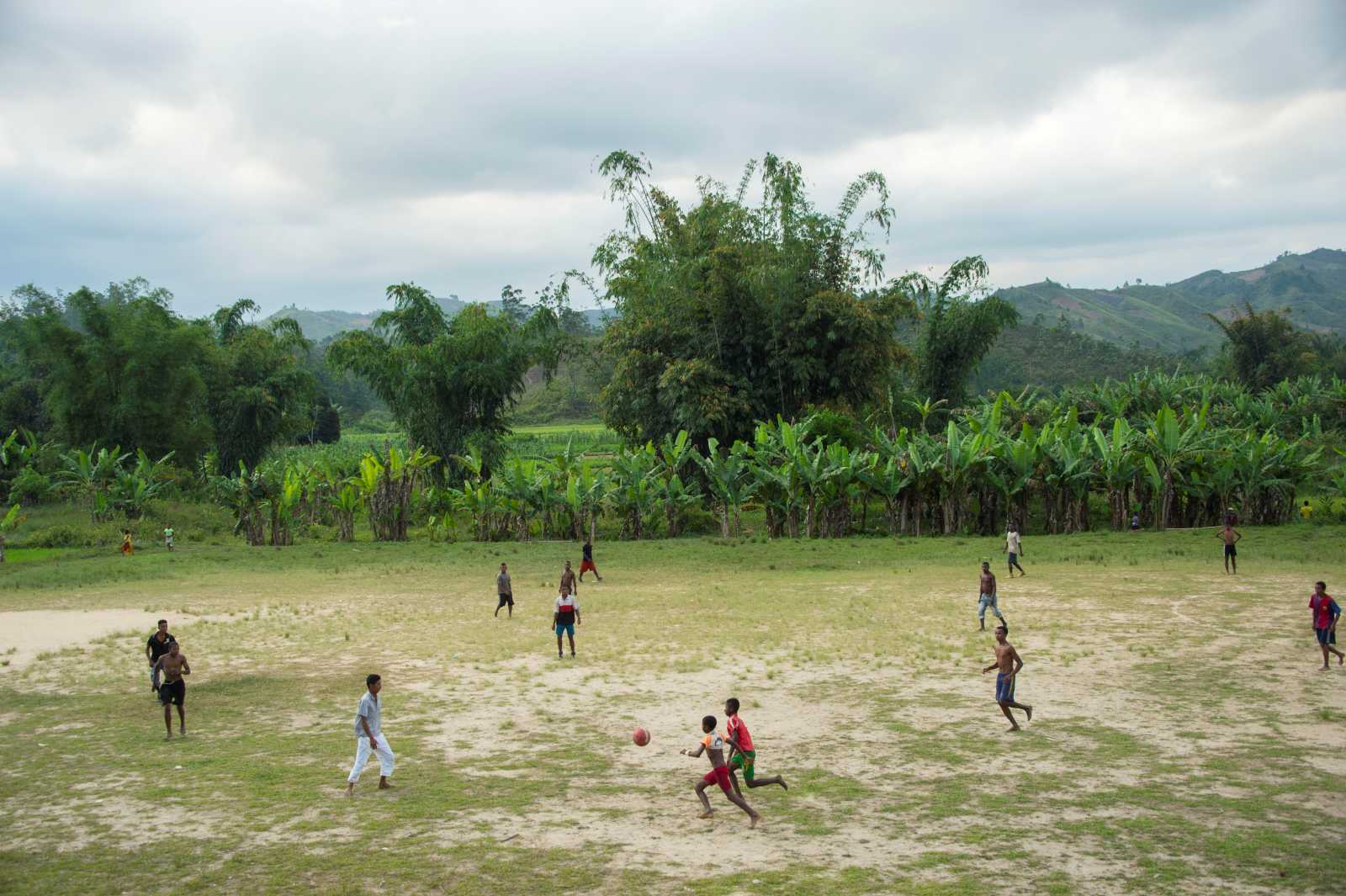Horn of Africa
The multiple layers of drought
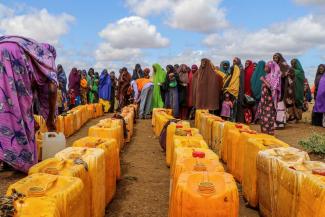
The Horn of Africa is highly vulnerable to the effects of the climate crisis, leading to regular and severe droughts as well as floods. In recent years, these events have become more frequent and intense. Consequently, the region has experienced water scarcity, reduced agricultural productivity and the depletion of livestock and natural resources.
In the past, droughts occurred in the region about every five to ten years. Then they began to happen every three to five years. Now they seem to have become permanent. For the third consecutive year, the Horn of Africa is experiencing significantly reduced rainfall during the rainy season.
Restricted water access has caused reduced crop yields, livestock deaths and a decline in food production. More than 13 million animals have perished since 2020 across Kenya, Somalia and Ethiopia alone, according to the UN Office for the Coordination of Humanitarian Affairs (OCHA).
Rural communities that depend on farming and herding are particularly affected. As a result, these communities experience prolonged food insecurity, leading to hunger, poverty and disease. Vulnerable groups, especially women and children, suffer the most.
Low water quality and lack of water contribute to the transmission of waterborne diseases like cholera, dysentery and typhoid. People often resort to using contaminated water, which poses additional health risks and burdens health-care systems that are already under stress.
At the same time, the Horn of Africa has one of the highest population-growth rates in the world, averaging three percent per year. This exacerbates the struggle for available resources and increases pressure on limited arable land. As a result, deforestation, soil degradation, groundwater depletion and biodiversity loss are widespread in the region.
Migration as a coping strategy
Moreover, when water becomes scarce, disputes over access, control and distribution can escalate, leading to conflict and violence. These conflicts have the potential to further destabilise already fragile social and political systems.
Migration is a coping mechanism for communities in need. According to OCHA, more than 2.7 million people have been displaced since 2020 by the ongoing drought across Kenya, Somalia and Ethiopia. People are leaving their homes in search of better access to water and other basic needs. Sometimes entire communities are displaced by drought or water-related conflicts. Thus, refugee camps are emerging, and the influx of migrants into urban areas is growing, putting additional strain on limited resources and services.
Internal and cross-border migration due to water increases tension in a region plagued by wars and conflicts. In a vicious circle, people move from one crisis to the next, as most stay within the region.
Ethnic conflicts, civil wars, sexual and gender-based violence (SGBV) are part of everyday life, alongside disputes over access to water and land. According to the Fund For Peace’s Fragile State Index 2023, the Horn of Africa is one of the most volatile regions in the world. Somalia is considered the most unstable country globally according to the index. South Sudan follows in third place and Sudan was in seventh at the time of publication. Ethiopia and Eritrea are on “High Alert” and “Alert” respectively. All of these countries have been at war in the recent past or are currently in conflict.
According to the UN Refugee Agency (UNHCR), these conflicts have led to more than 13 million internally displaced people in the region by last year and 5 million refugees by March 2023. People are fleeing destruction, persecution and death.
SGBV is a common form of violence in this context. Various armed groups often target women and girls for rape, forced marriage and sexual slavery. SGBV was used in the recent war in Ethiopia and is also being reported from the ongoing war in Sudan.
Although the African Union (AU) has a peace and security architecture, its capacity to mediate conflicts is limited. The presence of the UN in every country in the Horn of Africa shows that national governments are overwhelmed by the task of dealing with all the challenges that affect their people.
Colonial relics create new conflicts
To make matters worse, relics of the colonial era not only recall historical grievances, but can also lead to new conflicts, as in the case of the Grand Ethiopian Renaissance Dam (GERD). In the past, Egypt had successfully prevented the construction of dams on the upstream Nile, invoking colonial-era agreements with Britain and Sudan from 1929 and 1959. Ethiopia’s decision to build the dam almost triggered a water war between the riparian states, especially between Ethiopia and Egypt.
It is high time for a mechanism to help these nations manage common resources such as water. This requires a multi-faceted approach that includes sustainable water management, investment in water infrastructure, improved agricultural practices and effective economic and governance systems.
In addition, regional, national and international cooperation is crucial to help communities build resilience to water scarcity, mitigate conflict and find sustainable solutions around resource management and equitable access. This also includes peacebuilding and conflict resolution, supporting humanitarian aid and development initiatives as well as addressing sexual and gender-based violence. A framework for legal and secure migration is urgently needed too.
All this requires a comprehensive approach. Regional bodies such as the Intergovernmental Authority on Development (IGAD), the AU and the UN can offer technical expertise and policy tools to facilitate processes that advance durable solutions.
Such procedures depend on the active participation and support of all stakeholders from governments, institutions, civil society and local communities. After all, the people in the Horn of Africa deserve to live a dignified, peaceful, just and prosperous life.
Christoph Schneider-Yattara is the regional representative of Bread for the World’s Horn of Africa Regional office.
csyattara@padd-africa.org
Correction, 29.08.2023: We have deleted a statement about the completion of the Grand Ethiopian Renaissance Dam (GERD) that was included in an earlier version of this text. We also corrected the word "downstream" to "upstream".
